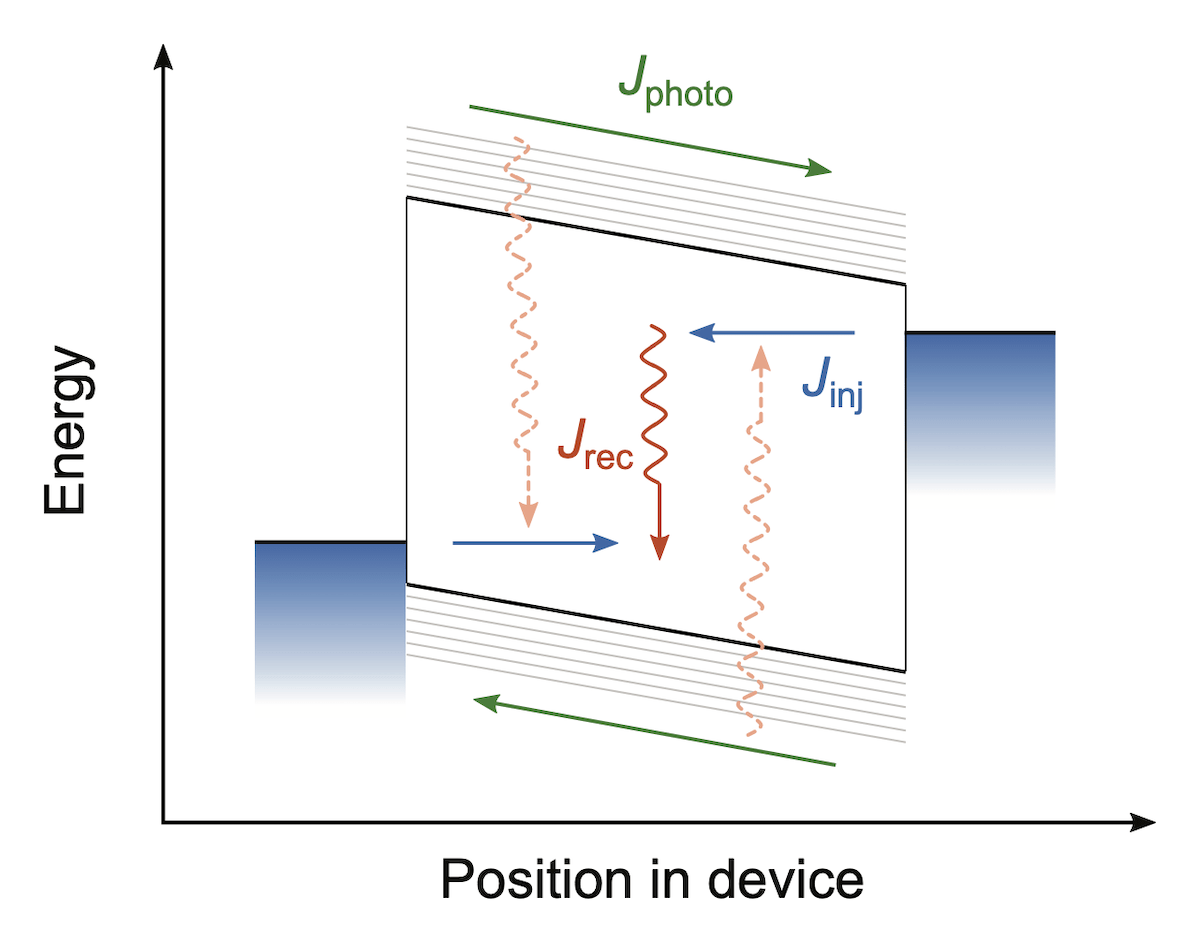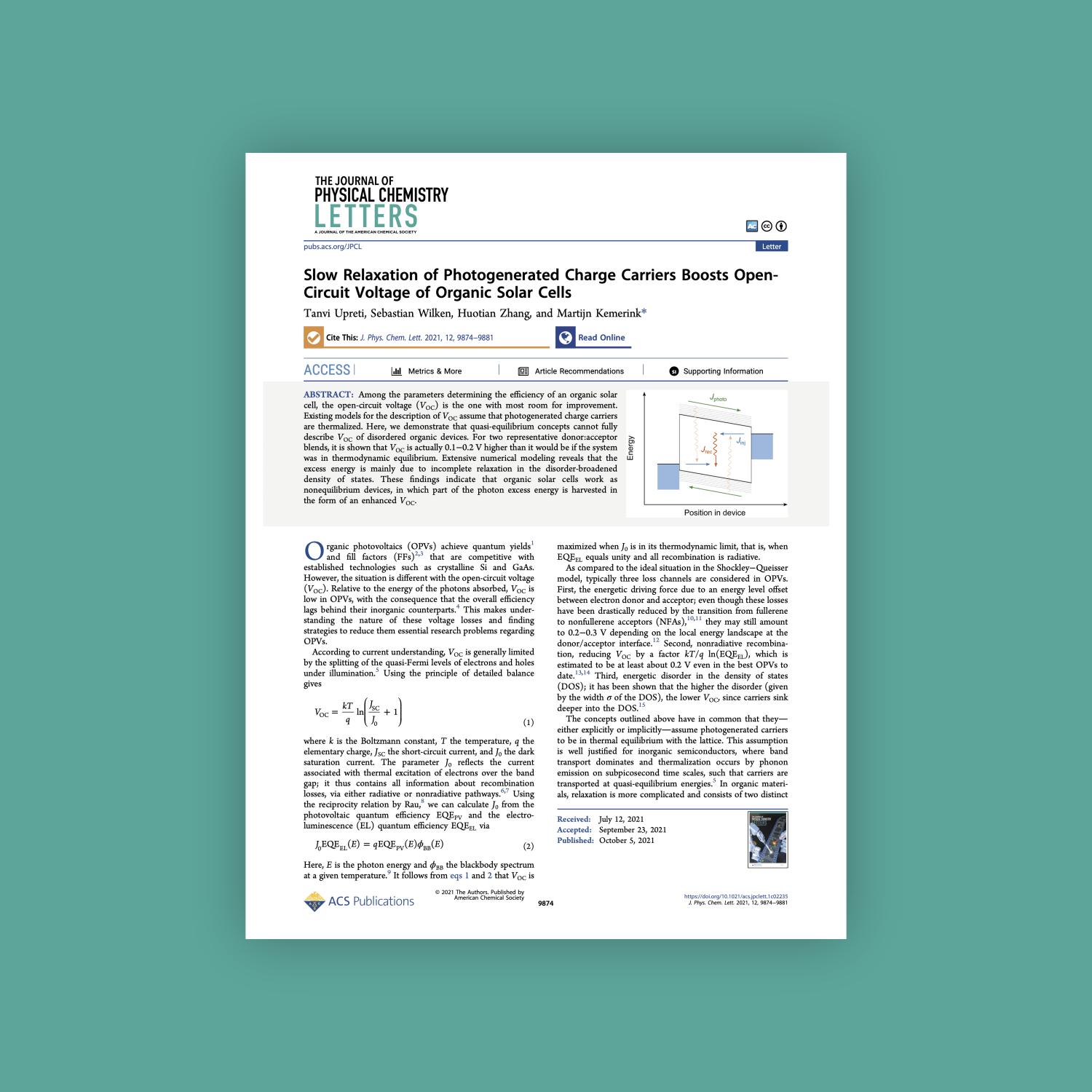Can organic solar cells perform better than what is commonly thought? That’s the question raised by this paper based on my work at Linköping University in Sweden.
When it comes to organic solar cells, it’s all too common to apply the theory originally developed for their inorganic counterparts. The reason is simple: in many cases, there are no theoretical models for organic materials yet. Also, scientists tend to be lazy. This often works well, but not always.
One thing that sets organic materials apart is that they’re typically disordered. Think of an individual chain of a conductive polymer, as they’re often used as absorbers and electron donors in organic solar cells. The chain may wind and bend, have kinks or be interrupted somewhere. In other words: a complete mess. This is very different from the crystalline materials you find in conventional, inorganic solar cells.
The chaos in structure finds its reflection in the energy landscape of the organic material, which is called energetic disorder. One crucial yet often neglected consequence of energetic disorder is that photo-generated charge carriers do not relax immediately to their equilibrium energy, but thermalize on a relatively slow time scale through hopping processes.

We used kinetic Monte Carlo simulations to show that slow thermalization can lead to organic solar cells having a higher open-circuit voltage than one would expect according to equilibrium theory. We were able to illustrate this for two experimental systems, including the state-of-the-art non-fullerene blend PM6:Y6. An important consequence is that organic solar cells could in principle have a higher efficiency than previously estimated.
It wasn’t easy to publish the work as it challenges some paradigms that have been around in the field for decades. In the end, we found a place in The Journal of Physical Chemistry Letters and are very pleased with the result
Reference
Tanvi Upreti, Sebastian Wilken, Huotian Zhang, Martijn Kemerink. Slow Relaxation of Photogenerated Charge Carriers Boosts Open-Circuit Voltage of Organic Solar Cells. J. Phys. Chem. Lett. 12, 9874 (2021)
